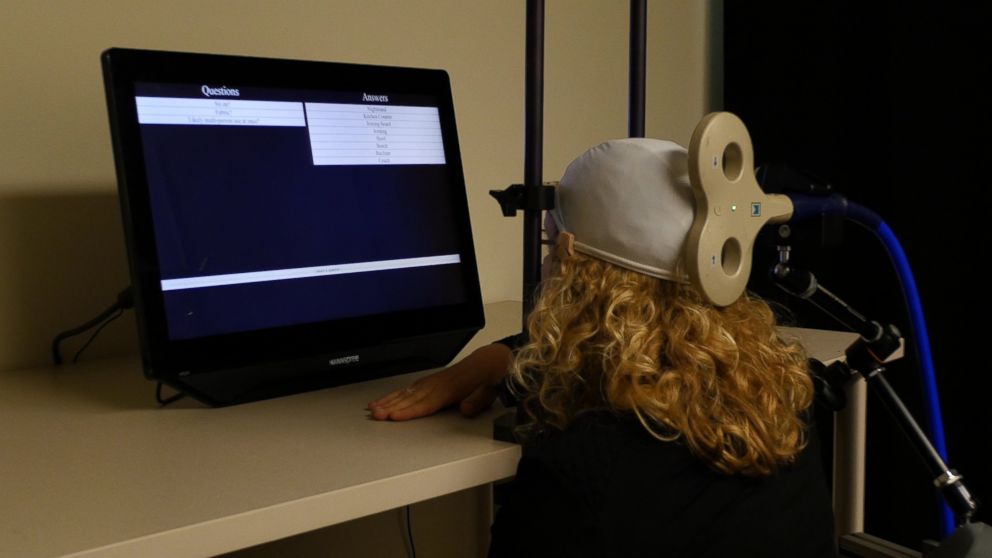'Mind Reading' May Be Possible With Brain-to-Brain Interface, New Study Finds
Subjects were nearly a mile apart as they underwent tests, new study reports.

— -- Researchers are hoping to find out if a certain kind of “mind reading” might be possible, with the help of some serious computers.
Scientists from the University of Washington published a new study examining the feasibility of a “brain-to-brain” interface between two people that may allow them to communicate with brainwaves and a specially designed computer.
The research team set up a game similar to “20 Questions,” where one person would ask a question of the other respondent. In a different room, the respondent would focus on the answer to that question by looking at either a “Yes” or “No” flashing light. The two participants were in separate rooms nearly a mile apart, according to the paper, published today in the prestigious journal PLOS One.
The second participant's EEG brainwaves were then transmitted back to the original participant via a magnetic coil behind the participant's head. The device is aimed at stimulating the visual cortex so that the original participant sees a flash of light. If the participant sees that flash of light they know to answer yes.
"This is the most complex brain-to-brain experiment, I think, that's been done to date in humans," lead author Andrea Stocco, an assistant professor of psychology and a researcher at UW's Institute for Learning and Brain Sciences, said in a statement today.
Each group of two participated in 20 games -- a mix of both control and actual experiments. The 10 participants could guess the correct object in 72 percent of games with the device compared to just 18 percent of the control games, according to the study.
The team said that their research had limits but that they hope to continue these experiments in the future.
"Evolution has spent a colossal amount of time to find ways for us and other animals to take information out of our brains and communicate it to other animals in the forms of behavior, speech and so on," Stocco said in a statement. "What we are doing is kind of reversing the process a step at a time by opening up this box and taking signals from the brain and with minimal translation, putting them back in another person's brain."
The University of Washington has used this kind of brain-to-brain interference with a “mind control” experiment where a scientists “transmitted” his thoughts to a partner while they played a video game.
Rajesh Rao, a professor of computer science at the University of Washington who was the lead author of that 2013 study, said that these kinds of devices may someday help people with "locked-in" syndrome or help blind people “see” by transmitting images to their brain directly.
The technology is "not quite good enough to transmit images -- but people are working on other technologies that [would be] precise enough to send images," Rao told ABC News in 2013. "That still [has] some ways to go."
Virginia de Sa, associate professor of cognitive science and member of the Temporal Dynamics of Learning Center at University of California, San Diego, said the study was interesting because it had a closed loop of information going from one participant to another.
The “brain-to-brain” interface can potentially be used to help “locked-in” patients communicate to either a computer or someone in their vicinity, she told ABC News today.
However, for this kind of closed-loop information, it’s unlikely this would be used by patients because you have to stimulate another person’s brain to transmit material, said de Sa, who was not involved in the UW study. Instead, spies might be more likely to utilize the technology.
“This would be an interesting application you can imagine between spies, transmitting information you don’t want to get to anyone else. This is another way where you can send it directly to their brain,” she explained. “If you wanted to communicate something to someone else without everyone else being able to possibly see it.”






